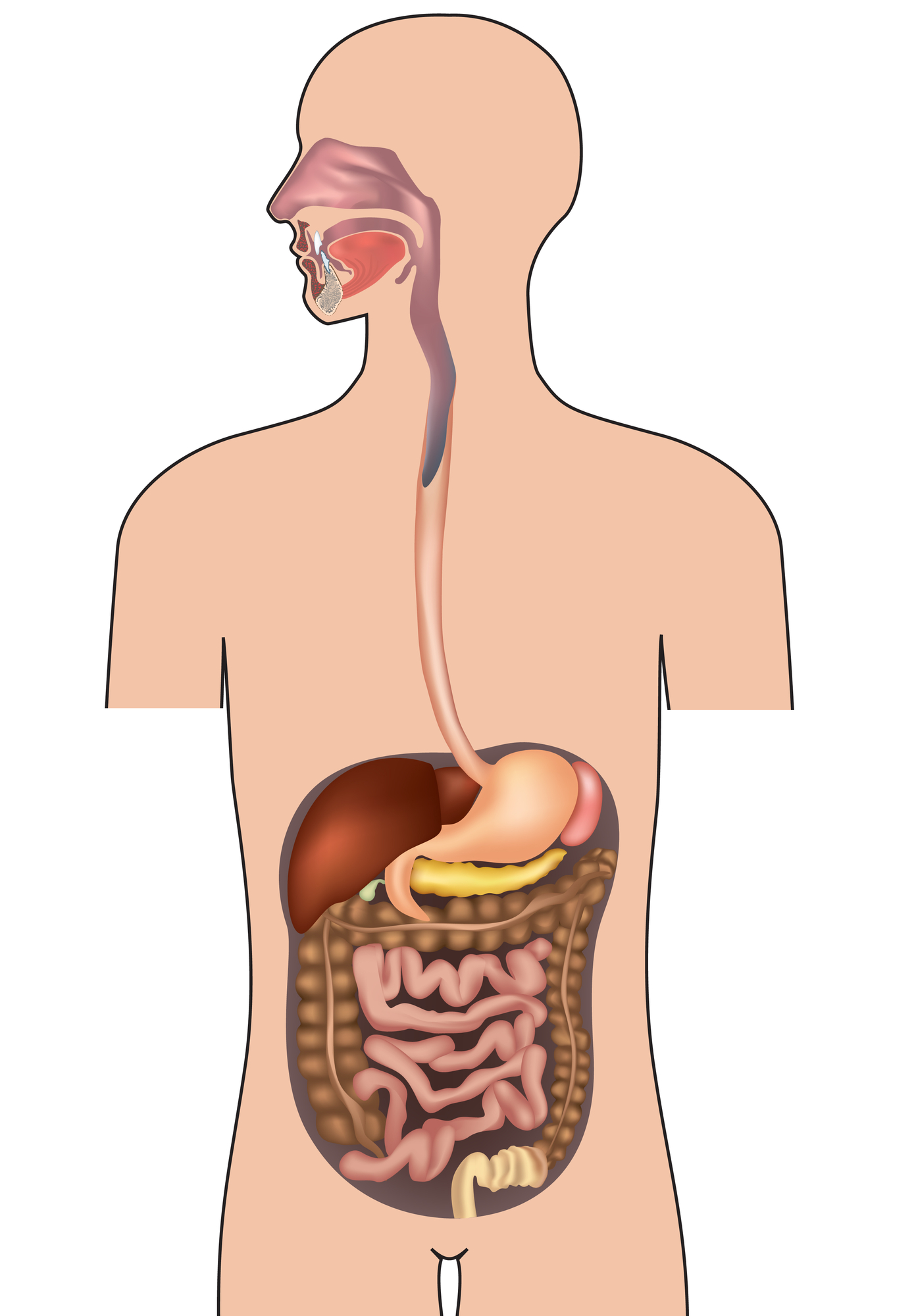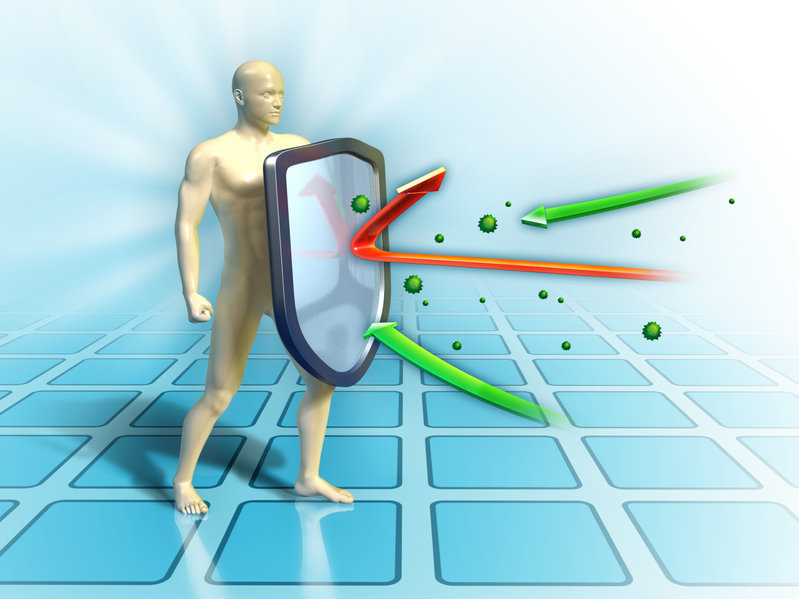What is the Immune System
The immune system is your protective shield from the outside and the inside world of pathogens. Examples of pathogens are bacteria, viruses, fungi, and toxins (such as metals and human-made chemicals). Your immune system has two shields or layers for defending off the pathogens: the outer layer and the inside layer.
- Immune System--First Line of Defense
- Outer Layer: Skin and Mucous Membrane
Your skin is the body’s largest organ and it’s one of the physical barriers the microbes have to break through before they can enter deeper into the human body. The mucous membrane which lines the body cavity (ex., inside the nose, mouth, esophagus, and digestive tract) is your next physical layer that the microbes have to penetrate through.
These two immune system members discourage microbes and foreign substances through several mechanisms and here are some:
- The epidermis of the skin is the first protective shield.
- The shedding of the dead cells of the skin is another way of removing toxins and microbes.
- Natural chemicals produced in the skin can kill certain types of microbes.
- Your skin contains a sebaceous gland that secretes oil (a.k.a. sebum) which acts as a protective shield on the skin.
- The skin has an acidic environment that is hostile to many of the microbes.
- The mucous membrane secretes mucus that holds microbes and substances.
- Another example is the fine hairs inside the nose which is covered in mucus and functions as a filter and a trap for pollen, dust, and microbes.
- Sneezing and coughing is another way to expel the foreign substances and microbes that are trapped in the mucus thanks to the mucous membrane.
- Tears produced by the lacrimal apparatus in the eyewash out small particles of dust and other irritant substances.
- Lysozyme is an enzyme found in tears that can kill some types of bacteria so it works as an antimicrobial. Lysozyme is also found in saliva in the mouth, nasal secretions, tissue fluids, and perspiration.
- In the mucous membrane of the mouth, there is a salivary gland that produces saliva to wash out and clean the mouth and teeth from many microbes thereby reducing the number of pathogens.
The above are some of the major first-line defenses of the immune system. But what is the immune system’s second line of defense?
Despite this amazing first-line defense of the immune system, still it is not completely impregnable. I can’t remember how many times I had my skin (ex., knees and elbows) and mucous membrane (ex., inside of my mouth and nose) cut from falling off a bike and brushing/flossing my teeth; these examples caused injuries. Once that happens, pathogens will be waiting there to take advantage of this situation to penetrate deeper into the human body.
Your Immune System--Second Line of Defense
This internal line of your immune system consists of
- Fever
- Chemical substances that have an antimicrobial property
- Phagocytes
- Inflammation
- Natural Killer Cells
So let’s take a look at each part of the internal immune system: what it is, and its functionality.
Fever is the immune system’s response to inhibit the growth of pathogenic microbes. Interleukin-1 is one of the substances released by the internal immune system to suppress the growth of certain microbes. So the fever actually is produced by your immune system and the microbes themselves to make the environment of the body as hostile as possible to these microbes which are causing the illness.
Antimicrobial Chemicals
Another strategy employed by the immune system is producing powerful antimicrobial chemicals to kill pathogens:
1-Antimicrobial proteins (AMPs) are short peptides that have a wide range of antimicrobial effects. Some examples of the AMPs are defensins, cathelicidin, dermicidin, and thrombocidin. These AMPs not only kill various microbes but also invite other immune cells such as mast cells and dendritic cells to help fight pathogens.
2-Complement System contains inactive proteins on plasma membranes and in blood plasma. They become active and help or complement part of the immune or allergic, or inflammatory response. Complement proteins create a process called cytolysis which has the ability to make holes in the membrane of bacteria causing them to burst and die. Opsonization is another method where the complement proteins bind to the bacteria (or other microbes) and tell other immune cells to come and devour the microbes.
3-Macrophages and lymphocytes produce proteins called interferons which can interfere with viral replication since viruses cause disease when they start replicating in the body cells.
4- Iron-binding proteins are antimicrobial substances such as transferrin and lactoferrin that can steal iron from bacteria to inhibit their growth and eventually kill them. Transferrin is found in the blood and tissue fluids and lactoferrin is found in milk and saliva.
Phagocytes
Phago means to eat and cytes means cells; therefore, these immune system cells defend the body by devouring microbes that are small enough for consumption. The primary phagocytes are macrophages and neutrophils.
Inflammation
Inflammation is one of the defense reactions to damaged tissue such as an ankle sprain, skin cut, or burns. Inflammation has the ability to deal with foreign substances, microbes, or toxins so these don’t spread further to other tissues and make conditions worse. Immune system cells like neutrophils, monocytes, and phagocytes are among the most involved cells during the inflammation process.
Natural-Killer Cells (NK Cells) are considered the most aggressive immune system defenders or soldiers. They can kill tumor cells and a wide range of microbes. They are called natural-killer cells because they don’t need to recognize a specific antigen before releasing their toxins and killing it or them.







